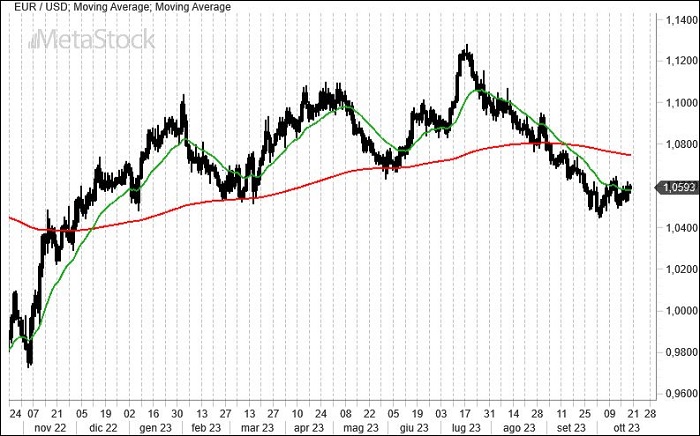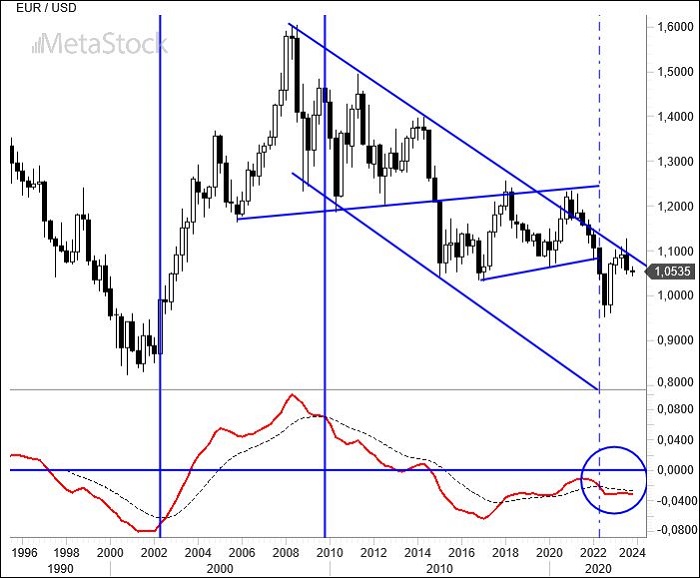- The US economy remains robust despite concerns over Middle Eastern tensions. As Powell confirmed, the FED won’t change interest rates, neither up nor down, benefiting the dollar.
- Europe faces two wars at its borders and new energy price tensions, potentially undermining the ECB’s efforts on inflation. No significant moves are expected in the next meeting, but the Euro remains weak.
- For now, EurUsd manages to withstand selling pressures, maintaining support around the 1.04 area. However, this balance seems increasingly delicate.
Markets Struggle Amid Renewed Uncertainty
Geopolitical tensions are overshadowing macroeconomic data and central bankers’ statements. The fear of the conflict between Israel and Hamas spreading to other parts of the Middle East is palpable. Consequently, markets are on edge, concerned about potential economic slowdowns and, more importantly, escalating tensions with Russia and especially China. Not surprisingly, the prices of oil and gas remain high. Gold is briskly heading towards the $2,000 per ounce mark.
The US Dollar remains in demand but hasn’t significantly outperformed against other major currencies. Meanwhile, government bonds continue their downward trajectory, with ten-year yields reaching 5% even in the longer segments of the American yield curve. Yet, the US economy demonstrates remarkable resilience to interest rates and the geopolitical environment. The GDP forecast by the Atlanta Fed for the third quarter is up to 5.4%, while September retail sales also reported a positive outcome at +0.7%.
The real estate market tells a different story, with construction activities declining by 7% year-on-year. The FED remains cautious, and while geopolitical risks buoy the dollar, the market wonders how long the strength of the greenback will last. Powell has acknowledged that inflation remains too high and that further hikes in money costs might be necessary—a sentiment the stock markets didn’t receive well.
The Euro is under pressure, especially as new terrorism incidents shake the confidence of already beleaguered consumers and businesses grappling with high-interest rates. It’s unlikely that the ECB will raise rates further, but it seems inflation won’t easily stabilize soon, underscoring the need for a tight monetary policy for the foreseeable future.
EurUsd Technical Analysis – How Long Will Support Last?
The technical backdrop for the Euro remains challenging. The 20-day moving average seems to be capping any rebound attempts, while the death cross is becoming more prominent, signaling not only a bearish direction but also a 200-day moving average now with a bearish tilt. This will inevitably deter any attempt by the Euro to reverse its trend. The 1.07/1.0750 area is thus the price threshold upon which traders might consider increasing their short positions, with stop losses above 1.08.

The second chart broadens the horizon and illustrates that the current bearish trend of EurUsd may persist. The quarterly MACD signal received during 2022 perfectly aligned with what technical analysis suggested when the exchange rate approached the long-term bearish downtrend line. A quarterly bearish engulfing pattern around the 1.13 mark facilitated a pullback that managed to break through the 1.08 resistance with little resistance. Thus, there appears to be a long-term bearish head and shoulders pattern that might have been cemented, potentially paving the way for parity or perhaps even more troubling outcomes for EurUsd.



Leave a Reply
You must be logged in to post a comment.